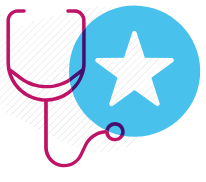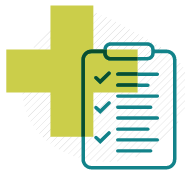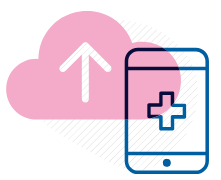 The Medicare Access and CHIP Reauthorization Act of 2015 (MACRA) streamlined three quality programs into a new Quality Payment Program (QPP) where Medicare physicians and other clinicians have a chance to get paid more for providing better care. The new QPP program combines:
The Medicare Access and CHIP Reauthorization Act of 2015 (MACRA) streamlined three quality programs into a new Quality Payment Program (QPP) where Medicare physicians and other clinicians have a chance to get paid more for providing better care. The new QPP program combines:- Medicare EHR Incentive Program
- Physician Quality Reporting System (PQRS)
- Value-Based Payment Modifier (VM) with the Quality Payment Program
Quality Payment Program (QPP)
There are two tracks for Medicare Eligible Clinicians (ECs) to take part in the Quality Payment Program:
- Merit-based Incentive Payment System (MIPS)
- Advanced Alternative Payment Models (APMs)
MIPS
Starting in 2017, ECs who serve Medicare Part B patients but don't participate in an APM need to participate in MIPS. MIPS applies to ECs who bill Medicare more than $30,000 in Part B allowed charges and provide care to more than 100 Medicare patients in a year.
- Initially ECs include Physicians, Physician Assistants, Nurse Practitioner, Clinical Nurse Specialist, Certified Registered Nurse Anesthetist.
- In future years, the list will expand to include physical therapists, occupational therapists, speech-language pahtologists, audiologists, nurse midwives, clinical social works, clinical psychologists and dieticians.
Under MIPS, there are four performance categories that affect how ECs will be paid for Medicare Part B:

Quality Clinical (Replaces PQRS and the quality portion of the Value-based Modifier)

Practice Improvement Activities referred to as “Improvement Activities” (New Category)

Electronic Exchange of Information referred to as “Promoting Interoperability” (PI) (MIPS equivalent of Meaningful Use)

Resource Use referred to as “Cost” (Replaces Value-based Modifier) (The Cost category is not yet in effect in 2017)
MIPS will drive whether ECs will receive negative or positive payment adjustments to their Medicare Part B reimbursement. Payment adjustments are based on comparison of the EC's performance with that of their professional peers and are applied to reimbursements received two years after the performance year. The adjustment is based on the overall score across the four MIPS performance categories, where PI makes up 25% of the score.
Note: MIPS does not apply to hospitals or facilities.
APMs
Alternative to the MIPS track, ECs can choose to participate in an Alternative Payment Model (APMs). APMs are new approaches to paying for medical care through Medicare that incentivize to clinicians to provide high-quality and cost-effective care. There are two subsets of APM models:
- Advanced APMs (may have to report ACI)
- MIPS-APMs (must report MIPS, including ACI)
CMS evaluates the APM models to determine whether the model is a MIPS-APM or an Advanced APM. You can find a list of the 2017 APM models versus the CMS criteria Here. This list may be subject to change based on CMS' future rule changes and determinations.
To be considered an Advanced APM, the APM model must meet three requirements:
- Use Certified EHR Technology (CEHRT);
- Provides payment for covered professional services based on quality measures comparable to those used in the MIPS quality performance category; and
- Either: (1) is a Medical Home Model expanded under CMS Innovation Center authority,
Or: (2) requires participants to bear a more than nominal amount of financial risk.
Advanced APMs must report on quality and financial measures. Advanced APMs that participate in the Medicare Shared Savings Program (MSSP) must also report on the ACI measures.
All other APMs are considered MIPS-APMs. The MIPS-APMs are required to report the MIPS measures, including the ACI measures.
Promoting Interoperability (PI) versus Meaningful Use (MU)
PI is the Health IT component of MIPS and replaces the Medicare EHR Incentive Program also known as Meaningful Use (MU).
As discussed above, PI applies to a) MIPS ECs, b) MIPS-APMs, and c) Advanced APMs that participate in MSSP.
Note: PI does not replace the Medicaid EHR Incentive Program, which has ended after Program Year 2021.
Note: The Promoting Interoperability (PI) component was previously called Advancing Care Information (ACI).
PI versus MU Stage 3 Objectives
The PI objectives and measures strongly overlap with the MU Stage 3, but offer more flexibility to comply within the scope of practice. Whereas MU measures are based on exceeding minimum percentage thresholds, PI measures are based on performance scoring of the actual percentages attained.
Like the MU objectives, the PI objectives promote electronic recording and exchange of patient data between the clinicians and with their patients. The PI objectives are similar to six of the eight MU Stage 3 objectives and include:
1) Protect Patient Health Information verified through Security Risk Analysis
2) Electronic Prescribing
3) Patient Electronic Access
- Patients can access to their electronic records & get online education about their health conditions
4) Coordination of Care through Patient Engagement
- Patients access their electronic records and electronically provide their health data to the providers
- Provider and patient use secure messaging to communicate
5) Health Information Exchange
- Exchange information between providers and with patients
- Clinical information reconciliation of the shared data
6) Public Health Reporting
MACRA, QPP, APM, MIPS and PI Resources
Use the following links to read more about MACRA, APMs, MIPS and PI:
CMS Quality Payment Program (QPP) Website
Advancing Care Information - Notice of Proposed Rule Making Fact Sheet (PI / ACI resource)
Advancing Care Information - Performance Category Fact Sheet (PI / ACI resource)
CMS Quality Payment Program Resource Library including reporting registries, specification sheets, fact sheets, final rules, etc.
